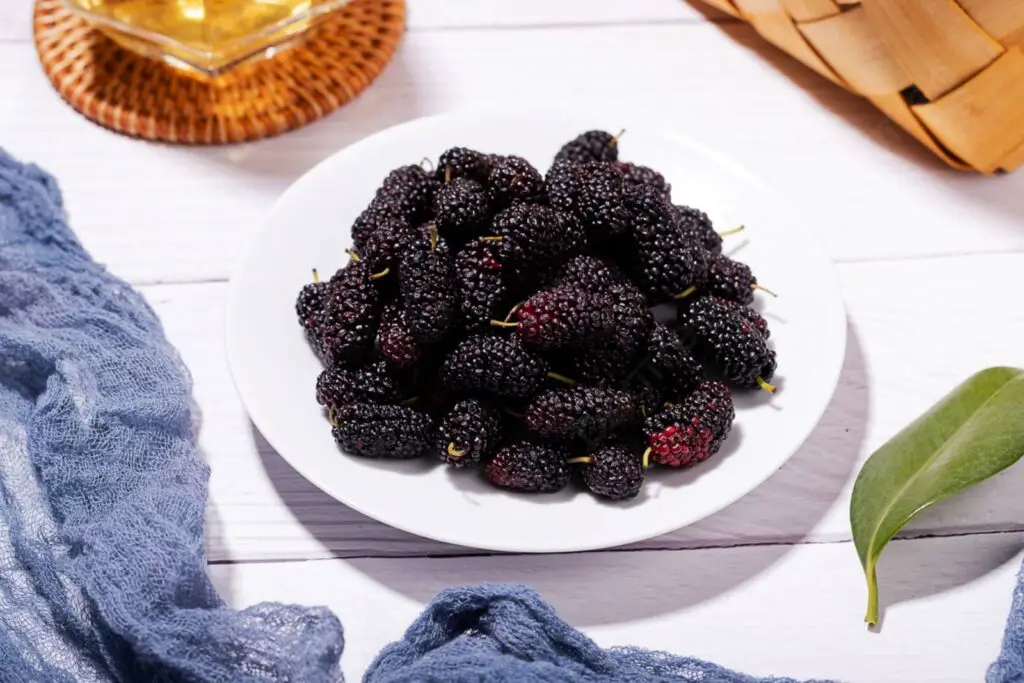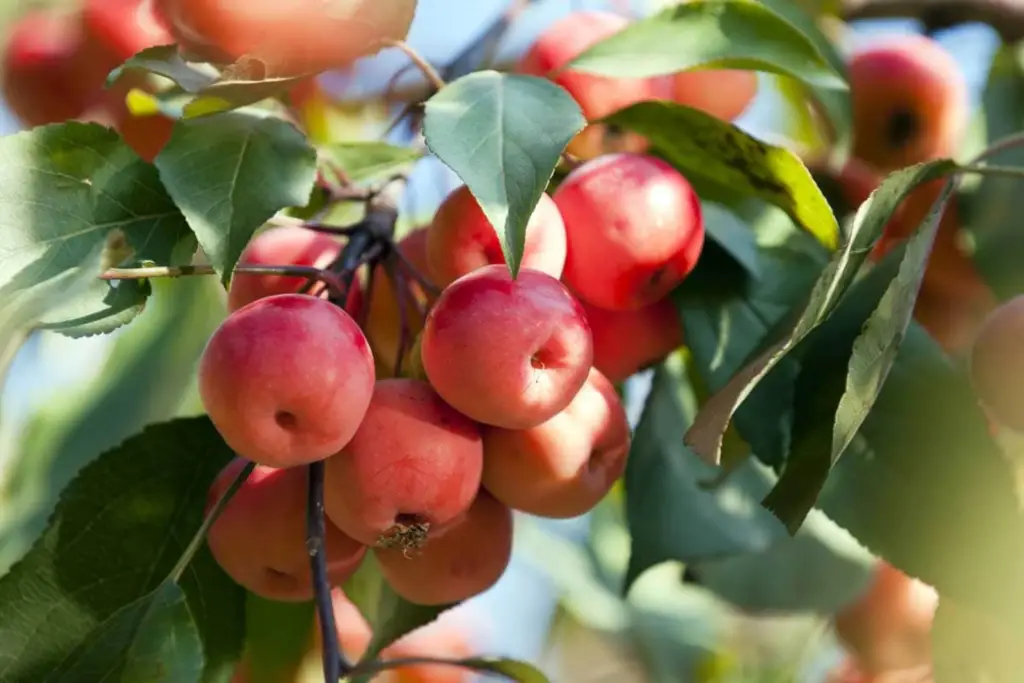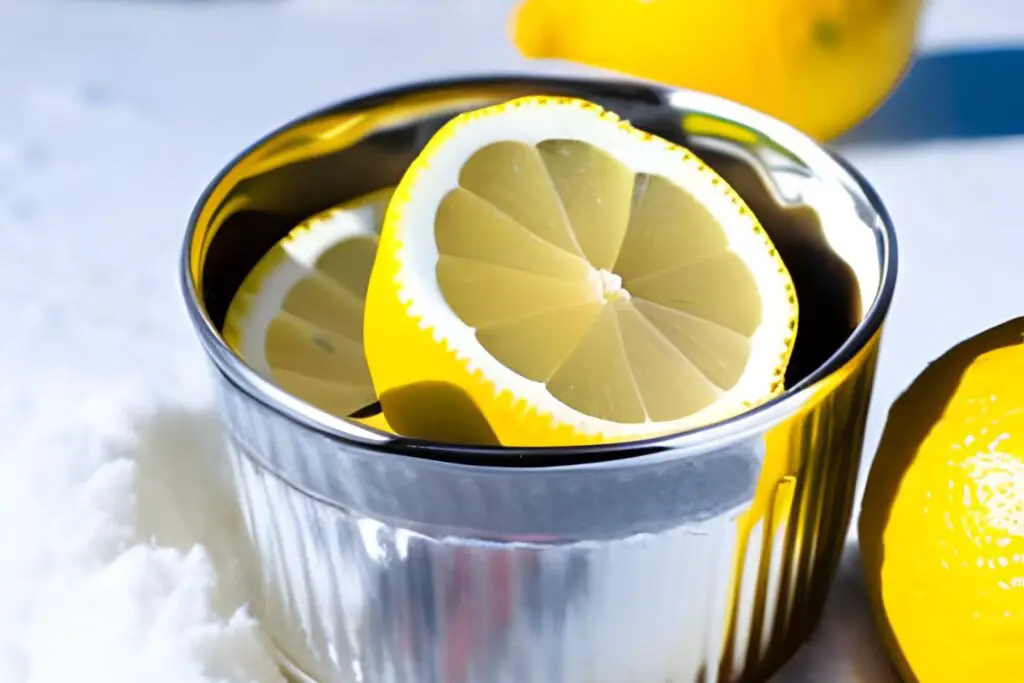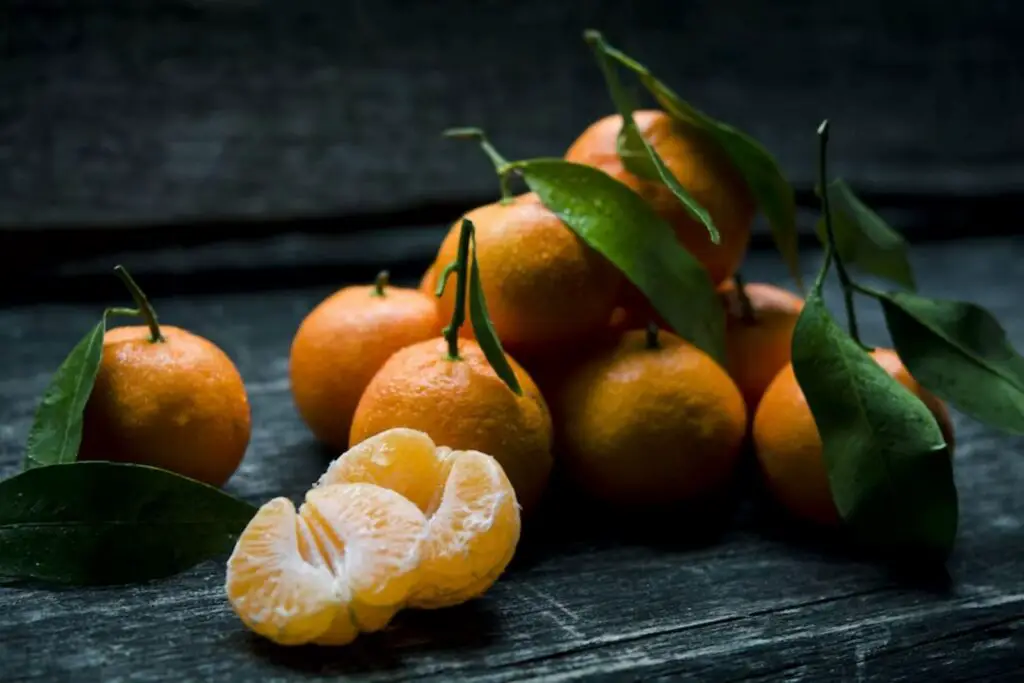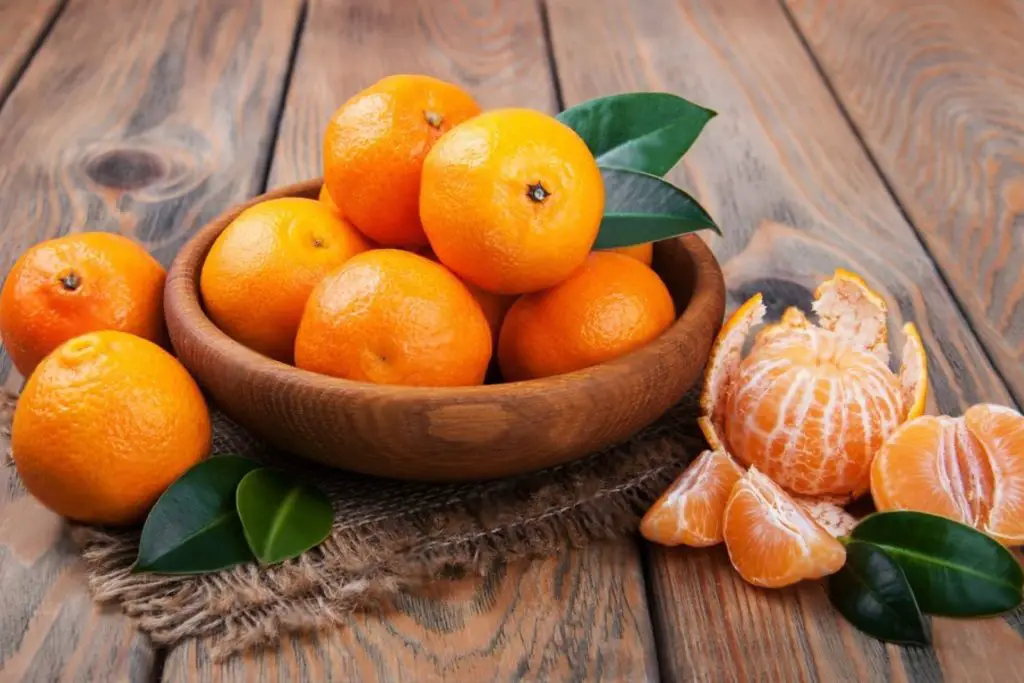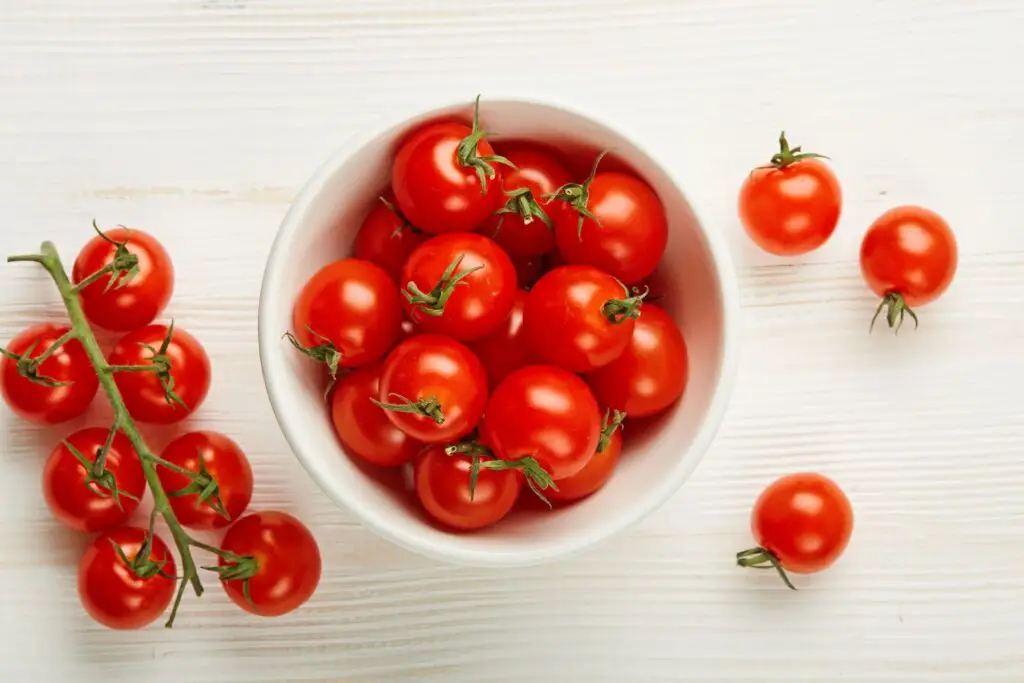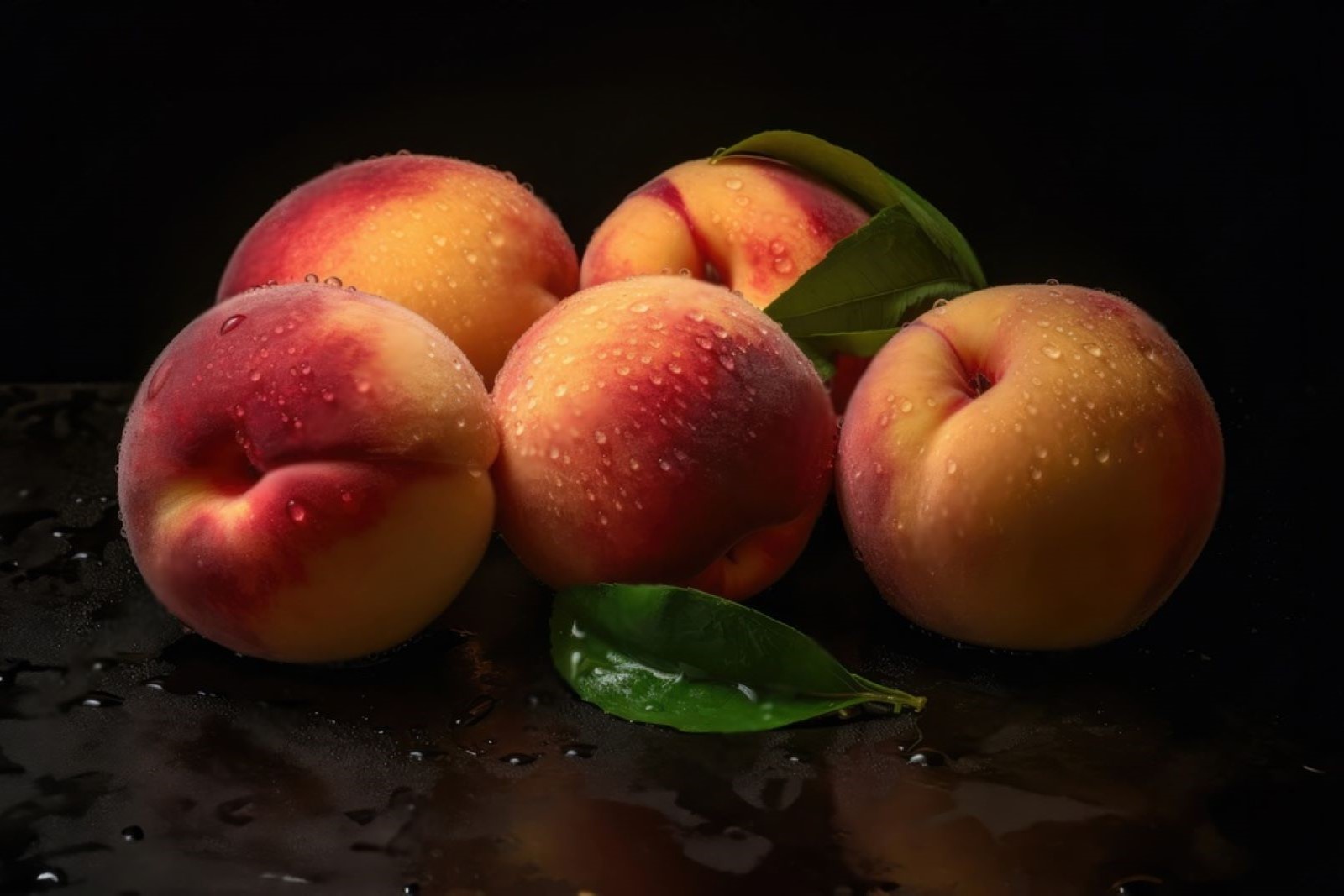
Georgia peaches, renowned for their unparalleled sweetness and juicy succulence, are a prized emblem of the American South and a beloved seasonal delight. These sun-kissed gems thrive in the fertile soils and warm climate of Georgia, producing peaches that boast a perfect balance of flavor and texture. Whether enjoyed fresh as a delightful snack, incorporated into luscious desserts like pies, cobblers, and ice creams, or blended into refreshing beverages, Georgia peaches carry the essence of summer and the joy of indulgence in every bite. However, when the peach season is at its peak or when you’re fortunate enough to acquire a bounty of these delicious fruits, it might be a challenge to consume them all before they begin to lose their peak freshness.
Freezing Georgia peaches becomes a practical and effective approach to preserving their delightful taste and capturing their sunny essence, ensuring that each slice retains its mouthwatering sweetness and culinary potential, ready to elevate your dishes with the essence of perfectly frozen Georgia peaches, even when the season has waned or when you yearn for the taste of summer at your convenience. In this guide, we will delve into the best practices for freezing Georgia peaches, allowing you to savor the richness of these quintessential fruits and elevate your culinary creations with the essence of perfectly frozen peaches, without the need for frequent trips to the market or limitations imposed by seasonal availability.
Here are the simple steps to freeze georgia peaches:
- Step 1: Select Ripe and Fresh Georgia Peaches
- Step 2: Wash and Prepare the Peaches
- Step 3: Peel and Slice the Peaches
- Step 4: Prevent Browning
- Step 5: Arrange the Peach Slices for Freezing
- Step 6: Flash-Freeze the Peach Slices
- Step 7: Package and Seal the Peach Slices
- Step 8: Label and Date the Packages
- Step 9: Store in the Freezer
Step 1: Select Ripe and Fresh Georgia Peaches
When embarking on the journey of freezing Georgia peaches, the initial and crucial step is to handpick peaches that are at their peak of ripeness. Opt for peaches that are ripe yet not excessively soft to the touch. This delicate balance ensures that your frozen peaches will maintain their texture and taste during the freezing process.
The key indicators of optimal peach ripeness are the visual cues. Look for peaches with vibrant and rich colors, as this suggests they have matured fully on the tree. The hues of orange, red, and yellow should be deep and inviting. A slight undertone of green near the stem is acceptable, but a completely green peach might not have reached its prime ripeness.
Another telling sign of ripe peaches is their alluring aroma. Gently hold the peach close to your nose and take a whiff. A fragrant, sweet scent indicates that the fruit is ready to be savored. If the fragrance is lacking or has a faint scent, the peach might need more time to ripen.
When you press your fingers gently against the peach’s skin, it should yield slightly to your touch without feeling mushy. Avoid peaches that are overly soft or have bruises, as they might not freeze well and could affect the quality of your frozen peaches.
Selecting the best, ripe peaches lays the foundation for delectable frozen treats that will capture the essence of summer, even in the coldest months.
Step 2: Wash and Prepare the Peaches
Once you have chosen the perfect batch of ripe Georgia peaches, the next step is to ensure they are clean and free from any external contaminants. Properly washing and preparing the peaches before freezing them is essential to maintain the quality and safety of your frozen fruit.
- Thorough Washing: Begin by placing the peaches under cool, running water. Gently rub your fingers over the surface of each peach, ensuring that all sides are exposed to the water. This action helps to remove any dirt, dust, or residue that may have accumulated on the skin during cultivation and transport.
- Focus on Contaminants: Pay extra attention to the areas around the stem and the bottom of the peach where dirt can often accumulate. Use your fingertips to delicately scrub away any stubborn particles.
- Drying Carefully: After the peaches have been thoroughly washed, it’s important to dry them properly. Lay a clean, absorbent towel on your countertop and gently place each peach on it. Pat the peaches dry using the towel, taking care not to bruise or damage the delicate skin. Absorbent towels help remove excess moisture, which can lead to freezer burn if not adequately dried.
- Drying the peaches is especially important because any residual water droplets can form ice crystals when frozen, potentially affecting the texture and flavor of the fruit. By ensuring that the peaches are completely dry, you’re taking a proactive step to preserve their taste and integrity during the freezing process.
- Minimal Handling: While washing and drying the peaches, handle them with care to avoid bruising or damaging the skin. The goal is to keep the peaches as intact as possible, maintaining their visual appeal and taste.
By meticulously washing and preparing the peaches, you’re setting the stage for a successful freezing process that will lock in their natural goodness and flavors. This step may seem simple, but it plays a pivotal role in the overall quality of your frozen Georgia peaches.
Step 3: Peel and Slice the Peaches
With your freshly washed and dried Georgia peaches ready, the next step involves transforming these vibrant orbs into neatly peeled and sliced segments. This process is pivotal for achieving both convenience and optimal taste when you eventually use the frozen peaches in your recipes.
Peeling Method Options:
- Knife Method: One option for peeling peaches is using a sharp paring knife. Begin by making a shallow cut all around the peach, just deep enough to pierce the skin. This cut creates a starting point for peeling. Subsequently, gently insert the knife’s edge under the skin and slide it along the fruit’s surface, following the curvature. The goal is to remove the skin while minimizing the loss of precious fruit flesh.
- Blanching Method: Alternatively, you can employ the blanching technique for peeling. This involves immersing the peaches in boiling water for a brief period, usually around 30 seconds to 1 minute, and then immediately transferring them to an ice water bath to halt the cooking process. The quick temperature change causes the skin to loosen, making it easier to peel off. After blanching, the skin should peel away effortlessly with the assistance of your fingers.
Slicing and Pitting:
- Once the peaches are peeled, it’s time to slice and remove the pits. Hold the peeled peach in your hand and use a sharp knife to carefully cut along the natural crease, which allows the two halves to separate. Gently twist the peach halves to detach them from the pit. You can then slice the peach halves into uniform segments or wedges, depending on your preference. Remove any remaining bits of the pit to ensure that only the succulent flesh remains.
Uniformity Matters:
- While slicing the peaches, strive for uniformity in thickness. This consistency not only enhances the visual appeal of your frozen peaches but also ensures even freezing and consistent texture when you’re ready to use them in recipes.
Handle with Care:
- Throughout the peeling, slicing, and pitting process, handle the peaches delicately to prevent bruising and loss of precious flesh. The goal is to create beautifully prepared peach slices that are primed for freezing while preserving their natural sweetness.
Mastering the art of peeling and slicing peaches requires patience and precision, but the rewards are well worth it. These prepared slices are versatile and can be effortlessly incorporated into a multitude of dishes, allowing you to savor the essence of Georgia peaches long after their season has passed.
Step 4: Prevent Browning
As you diligently prepare your Georgia peach slices for freezing, one vital consideration is preserving their vibrant color. The exposure of the peach flesh to oxygen can lead to browning, which can affect both the visual appeal and potentially the flavor of your frozen peaches. Taking steps to prevent browning ensures that your frozen peach slices remain as enticing as the day they were sliced.
The Oxidation Process:
- The natural browning process, known as oxidation, occurs when enzymes within the fruit interact with oxygen in the air. This reaction can result in a change of color from the vibrant shades of peach to a less appealing brownish hue.
Preventive Measures:
- Lemon Juice Solution: A tried-and-true method to prevent browning is to treat the peach slices with a solution of water and lemon juice. Lemon juice contains citric acid, which acts as an antioxidant and helps slow down the oxidation process. To create the solution, mix one part lemon juice with three parts water. Gently immerse the peach slices in the solution for a brief moment, ensuring all sides are coated. Allow the slices to drain well before proceeding.
- Commercial Fruit Preservative: If you prefer a more convenient option, commercial fruit preservatives specifically formulated to prevent browning are available in the market. These products often contain a combination of natural ingredients that inhibit oxidation. Follow the manufacturer’s instructions for usage, which typically involve immersing the peach slices in the preservative solution.
Gentle Treatment:
- Whether using the lemon juice solution or a commercial preservative, it’s important to handle the peach slices with care. Avoid excessive stirring or agitation, as rough handling could lead to bruising or damage.
Balancing Act:
- While preventing browning is important, it’s also essential not to overdo it with the lemon juice or preservative. Using too much can introduce unwanted flavors or alter the texture of the peaches.
By applying either the lemon juice solution or a commercial fruit preservative, you’re taking a proactive step to maintain the appealing appearance of your peach slices. This extra effort ensures that your frozen peaches will not only taste delicious but will also be visually enticing, adding a touch of summer to your dishes even in the depths of winter.
Step 5: Arrange the Peach Slices for Freezing
As you progress through the process of freezing your Georgia peach slices, the way you arrange them for freezing can significantly impact the end result. Proper organization is key to ensuring that your frozen peach slices maintain their individuality and don’t merge into a single mass. Taking the time to lay out the peach slices carefully on a baking sheet is a small yet essential step in the freezing journey.
- Parchment Paper and Space:
Begin by lining a baking sheet with parchment paper. This serves as a non-stick surface that facilitates easy removal of the frozen peach slices once they are ready. The parchment paper prevents the slices from adhering to the baking sheet and makes the transfer to storage containers simpler.
- Single Layer Placement:
One of the fundamental principles in arranging peach slices for freezing is to ensure that they are not touching each other. Lay the slices out in a single layer on the parchment paper, with some space between each slice. This prevents the slices from freezing together, making it easier to retrieve the desired quantity when you’re ready to use them.
- Avoid Overcrowding:
Resist the urge to overcrowd the baking sheet, as this can lead to the slices touching or overlapping. If necessary, use multiple baking sheets or freeze the slices in batches. Proper spacing ensures that the peach slices freeze individually and retain their distinct shapes, making them versatile for a variety of uses.
- Flat and Even:
Arrange the peach slices in a flat and even manner. This uniform layout ensures that the slices freeze uniformly, minimizing the risk of uneven freezing or texture changes.
- The Benefits:
Proper arrangement of the peach slices not only prevents sticking but also preserves their individual integrity. When stored together in containers, these individually frozen slices are less likely to clump together, making it easy to measure out the precise amount you need for recipes.
- Patience Pays Off:
While this step might seem straightforward, it requires patience and attention to detail. By taking the time to arrange the peach slices thoughtfully, you’re setting the stage for a hassle-free experience when it’s time to retrieve and use your frozen peach slices.
Organizing your peach slices with care is a subtle yet important aspect of the freezing process. This meticulous arrangement ensures that the slices remain conveniently separate and ready to infuse your culinary creations with the delightful taste of Georgia peaches, even in the coldest months.
Step 6: Flash-Freeze the Peach Slices
As you proceed in your quest to freeze Georgia peach slices, the technique of flash-freezing emerges as a crucial step to ensure the highest quality end result. Flash-freezing involves rapidly freezing individual pieces of fruit before bundling them together. This method safeguards the integrity of each slice and prevents the formation of a solid, impenetrable block, making it easier to access and use your frozen peaches.
The Flash-Freezing Process:
- Baking Sheet Placement: Once you’ve meticulously arranged the peach slices in a single layer on a parchment-lined baking sheet, it’s time to initiate the flash-freezing process. Carefully place the baking sheet in the freezer, ensuring it’s on a flat surface. The even positioning of the slices on the baking sheet facilitates consistent freezing.
- Timing is Key: Allow the peach slices to remain in the freezer for approximately an hour. During this time, the slices will undergo a swift freezing process. This individual freezing prevents the slices from clumping together and forming a solid mass.
Advantages of Flash-Freezing:
- Maintains Individuality: Flash-freezing is designed to preserve the individual identity of each peach slice. By freezing the slices separately before bundling them together, you ensure that they remain distinct and easy to separate when needed.
- Prevents Stickiness: Individual freezing minimizes the chances of the peach slices sticking to each other. This is particularly beneficial when it’s time to use the frozen peaches in recipes. You can remove just the amount you need without having to defrost an entire block.
- Enhances Texture: The rapid freezing process helps maintain the texture of the peach slices. When you eventually thaw and use them, they are more likely to retain their original texture and not become overly mushy.
While flash-freezing is a valuable technique, it’s essential not to leave the peach slices in the freezer for too long. Prolonged exposure to freezing temperatures can cause freezer burn, affecting the quality of the fruit. Hence, the one-hour guideline strikes a balance between swift freezing and preventing extended exposure.
By employing the technique of flash-freezing, you’re investing a small amount of time to ensure that your frozen peach slices remain pristine and accessible. This extra step guarantees that your peach slices are in prime condition for whenever you decide to use them, whether it’s for a luscious smoothie, a delectable pie, or a refreshing sorbet.
Step 7: Package and Seal the Peach Slices
Having successfully flash-frozen your Georgia peach slices, the next step involves safeguarding their quality during their stay in the freezer. Proper packaging and sealing play a pivotal role in preventing freezer burn and preserving the delectable taste and texture of your frozen peaches.
- Transferring to Freezer-Safe Containers:
Carefully lift the baking sheet with the individually frozen peach slices from the freezer. Swiftly transfer the slices into airtight freezer-safe bags or containers. These specialized containers are designed to keep out moisture and air, which are the primary culprits behind freezer burn.
- Minimizing Air Exposure:
As you place the peach slices into the containers, take a moment to press out any excess air. Air exposure can cause ice crystals to form on the surface of the fruit, leading to freezer burn. Gently press the bag or container as you seal it to remove air pockets and ensure a snug fit around the peach slices.
- Airtight Sealing:
The key to successful packaging lies in achieving airtight seals. If you’re using freezer-safe bags, make sure they are sealed tightly and use a vacuum sealer if available. If you’re using containers, ensure that their lids are securely closed, leaving no room for air to enter.
- The Role of Proper Packaging:
Properly packaging and sealing the frozen peach slices is akin to putting them in a protective cocoon. It shields them from the harsh environment of the freezer and prolongs their storage life while maintaining their impeccable quality.
- Quality Over Quantity:
When packaging, focus on creating manageable portions that you are likely to use in a single cooking session. This way, you can remove only what you need, leaving the remaining slices undisturbed and well-preserved.
By taking the extra time to package and seal your frozen peach slices with care, you’re ensuring that the essence of those sun-kissed Georgia peaches is preserved for your enjoyment throughout the year. When the time comes to use them, you’ll be grateful for the effort you put into maintaining their exceptional taste and texture.
Step 8: Label and Date the Packages
As you progress in your journey to freeze Georgia peach slices, meticulous organization becomes paramount. One of the final steps, but no less significant, is labeling and dating each package containing your frozen peach slices. This seemingly straightforward task has a considerable impact on ensuring that your frozen goodies remain accessible, identifiable, and enjoyable over time.
- Identifying Contents:
Before you store the packages away in the freezer, take a moment to clearly label each one. Use a waterproof marker or labels specifically designed for freezer use. Write down the contents of the package, which in this case would be “Frozen Peach Slices.”
- Adding the Date:
In addition to listing the contents, add the date on which the peach slices were frozen. This step is vital to keeping track of how long the peaches have been in the freezer. Frozen foods retain their quality and flavor best when consumed within a certain timeframe, so dating the packages assists you in ensuring your peaches are enjoyed at their prime.
- Organizational Benefits:
Labeling and dating might seem like a small task, but it serves as a simple and effective way to organize your freezer. When you open the freezer door, you’ll immediately know what’s inside each package without having to open them. This not only saves time but also prevents unnecessary defrosting or searching through packages to find the specific item you’re looking for.
- First In, First Out (FIFO):
Labeling and dating also enable you to follow the “First In, First Out” (FIFO) principle. This means that when you’re ready to use your frozen peaches, you can prioritize using the oldest packages first. This ensures that none of your peach slices go to waste and that you consistently enjoy the freshest produce possible.
- Preserving Quality:
By being diligent about labeling and dating, you’re actively contributing to the preservation of your peach slices’ taste and texture. With the information readily available, you can plan your meals and recipes accordingly, ensuring that your culinary creations are infused with the delightful essence of Georgia peaches year-round.
In the realm of freezing, the little details matter, and labeling and dating packages are no exception. This step adds a layer of organization and practicality that greatly enhances your frozen peach experience, ensuring that the taste of summer remains a staple in your kitchen throughout the changing seasons.
Step 9: Store in the Freezer
As you approach the final stage of freezing your Georgia peach slices, the importance of proper storage cannot be overstated. Storing your carefully prepared packages of frozen peaches in the freezer is the ultimate step in preserving their flavor and texture for the long term. Here’s how to ensure your frozen peach slices remain a delicious treasure trove, ready to enhance your culinary adventures whenever you desire.
- Package Placement:
Place the sealed packages of frozen peach slices gently and strategically in the freezer. Arrange them in a way that allows for easy access and retrieval. If you’re working with multiple packages, ensure there is enough space around each package to promote proper air circulation. Avoid overcrowding, as this can compromise the efficiency of the freezer and lead to uneven freezing.
- Optimal Temperature:
Set your freezer to a consistent temperature of 0°F (-18°C) or lower. This ideal temperature range ensures that your frozen peach slices remain in a state of suspended animation, preserving their freshness, taste, and nutritional value. Freezing at lower temperatures helps to prevent the formation of large ice crystals, which can degrade the texture and quality of the fruit.
- Temperature Consistency:
Maintaining a constant freezer temperature is essential. Fluctuations in temperature can lead to the development of ice crystals and freezer burn. To help ensure consistent temperatures, avoid frequently opening the freezer door unnecessarily, and be cautious about introducing warm items into the freezer.
- Monitoring and Organization:
Periodically check on your frozen peach slices to ensure they are maintaining their quality. Use the FIFO principle (First In, First Out) by consuming the older packages before the newer ones. Keep an eye on the labeling and dates to manage the rotation effectively.
- Duration of Storage:
While frozen peaches can maintain their quality for an extended period, it’s recommended to consume them within 8-12 months for the best flavor and texture. Over time, frozen fruits can lose some of their quality, so enjoying them within this timeframe ensures a delightful experience.
Remember, your freezer is a treasure chest of culinary possibilities, and by following these steps diligently, you’re unlocking a world of delicious creations that celebrate the sweetness and vibrancy of Georgia peaches throughout the year.
Other related questions
How do you defrost Georgia peaches?
To defrost Georgia peaches, transfer them from the freezer to the refrigerator. Allow them to thaw slowly over several hours or overnight. Avoid heat or microwave methods to preserve texture and flavor.
Can you refreeze Georgia peaches?
Refreezing Georgia peaches isn’t recommended. Once thawed, peaches can lose texture and quality. Consume thawed peaches promptly or use in recipes; avoid refreezing to maintain optimal taste.
How do I know if the Georgia peaches have gone bad after being frozen?
Inspect frozen Georgia peaches for signs of freezer burn, such as frost or ice crystals. Sour odor or off-putting flavors indicate spoilage. Texture changes, like mushiness or excessive softening, suggest deterioration.
Should I use sugar or syrup when freezing peaches?
Using sugar or syrup when freezing peaches is optional. Sugar helps maintain color and texture but can affect taste. Syrup helps retain moisture. Experiment based on preference and intended use, considering the natural sweetness of the peaches.
Can I freeze peach puree from Georgia for smoothies?
Yes, freezing Georgia peach puree for smoothies is feasible. Blend ripe peaches into a smooth consistency, optionally adding lemon juice to preserve color. Portion puree into airtight containers or ice cube trays for easy use; thaw as needed, retaining peach flavor and nutrition for smoothies.
Can I freeze Georgia peaches in water or juice?
Freezing Georgia peaches in water or juice is a suitable method. It helps prevent discoloration and freezer burn. Choose unsweetened liquid, cover peaches completely, and use airtight containers or freezer-safe bags.
Are there any differences in freezing clingstone vs. freestone peaches?
Yes, there are slight differences in freezing clingstone vs. freestone peaches. Clingstone peaches have flesh that clings to the stone, making them slightly harder to prepare. Freestone peaches have easily detachable flesh, simplifying slicing and freezing. However, both types can be frozen using the same methods.

